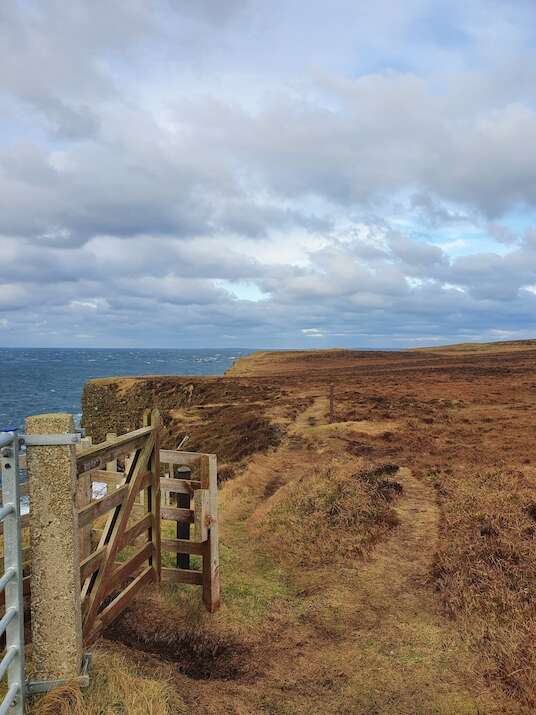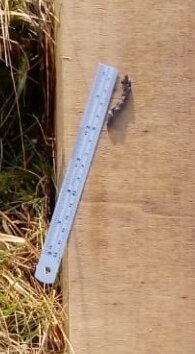Trapping update
Since we last reported our trapping statistics in the autumn we have seen a steady increase in the total number of stoats caught. The festive holidays and wild weather conditions reduced workdays throughout December and January so the stoat catch in these months appears low in spite of the increasing overall total.
Oct 2021 | Nov 2021 | Dec 2021 | Jan 2022 | Project total *** | |
Trap boxes deployed in the field | 113 | 81 | 45 | 57 | 6,539 |
Individual traps checked* | 9,955 | 12,461 | 8,022 | 11,233 | 179,462 |
Stoats caught** | 204 | 236 | 76 | 90 | 2,683 |
* many trap boxes contain two traps ** the stoats are killed using a type of lethal, humane trap – the DOC 200 – which is approved by the Spring Trap Approval Order for Scotland and the UK and meets the welfare standards defined by the Agreement on International Humane Trapping Standards (AIHTS). *** total statistics start date from 1 August 2019.
From the beginning of October 2021 through to the end of January 2022, as well as the 606 stoats caught, an additional 2,600 rats, 33 rabbits, 18 mice, seven frogs, six hedgehogs, four voles and three starlings have been found in the trap boxes in those four months. There have been 40,426 trap checks in that time so, to set this in context, mice were found during 0.045% of the trap checks.The wire-tied entrances to the trap boxes have significantly reduced the numbers of other animals being caught and bycatch continues to fall. However, there are occasions when some small animals still find their way into trap boxes but those incidents remain incredibly rare in the context of the large number of traps and trap checks. Nor will these isolated incidents have a significant impact on the overall population of this other wildlife compared to the impact of stoats.
Stoat sightings – we need you!
Following a gale-strewn winter the light is making a welcome return. The lengthening days also herald the fast-approaching stoat breeding season.

From next month females will be seen entering and exiting the same lairs regularly whilst carrying nesting material. Public reports where this is seen gives us the best indication that there could be a potential den site in that area. The stoat’s gestation is among the longest reported for mammals because of their biology of delayed implantation. Female stoats can get pregnant at any time, including when newly born and not yet left the nest. The development of the stoat unborn is delayed until the following year. Pregnant females delay birth for up to 280 days, so the young are born in April to May the year following impregnation. As soon as the form is filled on our website our team check the report to evaluate how best to respond. What happens next depends on how long the trap network has been open in that area.This year it is more important than ever to report sightings of stoats across Orkney’s Mainland. Stoats are harder to locate when numbers are reduced. Sightings of stoats, whether one or many, carrying food, or even playing, are increasingly valuable to us. We evaluate every sighting we receive and adjust our trapping methods to home in on the location where the stoats are reported. We really value the time and effort to the public report sightings. They are all extremely helpful and will become even more critical as the population of stoats on Orkney’s Mainland reduces from east to west, north to south.
We also plan to use the specially trained working dogs to methodically check specific areas, which will tell us know whether it is clear of stoats much like they have been doing on the high-risk islands closest to Orkney mainland. Stay tuned for how this is progressing over the coming months! As it is much harder to find stoats when they are in lower numbers folks in Deerness will see our stoat detection dog teams out in the parish more often over the coming months. Alongside the vital stoat sightings from the community, together with monitoring tunnels, motion-triggered cameras, and thermal imaging cameras the dog teams will help track down the last remaining stoats.

These highly trained working dogs do not hunt stoats, but they do use their noses trained to seek out signs of Orkney stoats and indicate this to their handlers. The dog team skills and public stoat sightings support the eradication field teams planning the trap network on the ground who adapt the information swiftly.The eradication project data drives the direction to take when it comes to moving the eradication into its final phases.
The independent expertise sitting on the Technical Advisory Group also supported our proposals testing the theories to help us evaluate what works in Orkney at their last meeting.As the stoat population has been ‘knocked-down’ in Deerness it is very exciting that we are now preparing to pilot the next phase of the eradication from next month. This stage of any eradication is known as the ‘mop-up’ phase to show that the eradication is heading towards its final stages.

A combination of factors led to our decision that Deerness is the ideal test area to pilot our methods to remove every stoat - the length of time that the trapping network in Deerness has been open, the regular stoat catch reducing indicating the population has dropped, the drop in public sightings in the area and the natural barrier of the isthmus at Dingeshowe which contains the area of the trial.
The Deerness trap network has been open since autumn 2019, and even with the impact of Covid-19 lockdowns preventing trap checks, the stoat population has been significantly reduced enough for us to consider that the first stage of the eradication is succeeding there.
Land access isn’t just for trapping!
Over 800 landowners have granted us access to their land, whether for placing trap boxes, monitoring wildlife, or using Europe’s first detection dogs to find signs of stoats. We always welcome new land access so, whatever the size of your yard, do get in touch with us if you would like to help protect Orkney’s wildlife even if you prefer this is only for monitoring wildlife, or allowing the detection dog teams to find signs of remaining stoats or simply confirm absence of stoats in your area.
Until our next issue, you can keep up with our progress via our Facebook page and our monthly column in the Orcadian newspaper. Any questions please do feel free to contact us.

